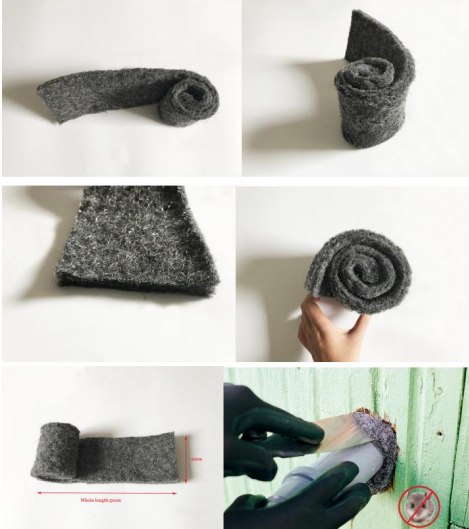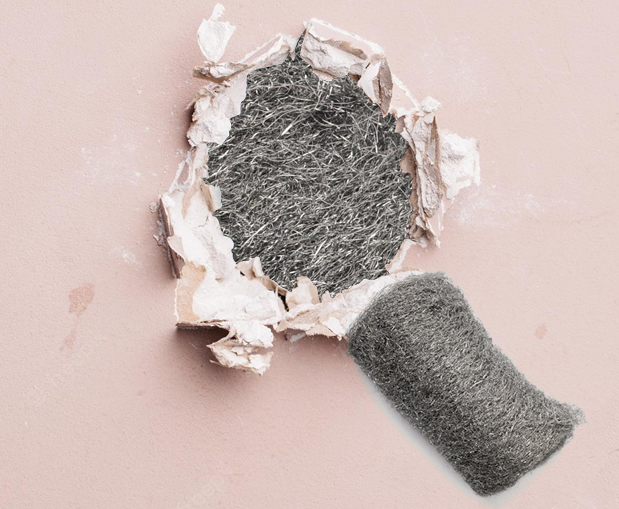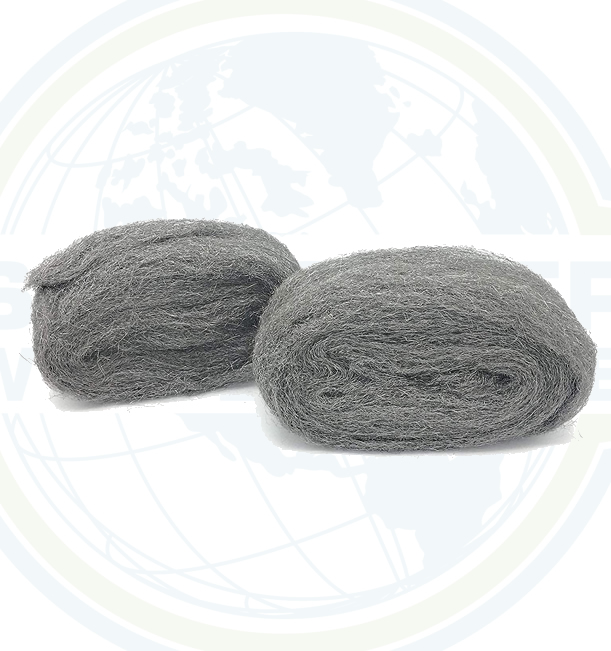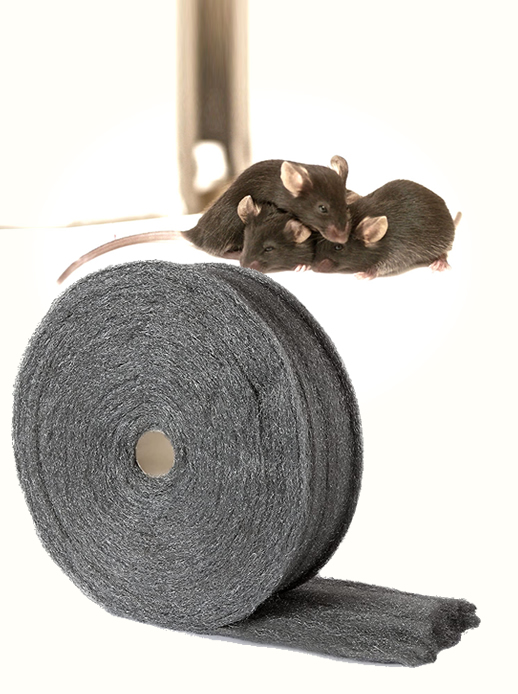How does steel wool for mice help safeguard your spaces?
Steel wool is made up of multi-directional layers with coarse stainless steel wool sewn together that interlocks steel strands.
It helps produce a protective barrier that makes it difficult for rats, bats, scorpions, lizards, and vermin when implemented properly while being simple to install.
It is a safe, effective, and ecological solution to keep pests and rodents out of premises, homes, buildings, basement corners, and other preferred structures. What makes it difficult for rodents to gnaw the stainless steel wool is because of its sharp fibers, which may cause them pain and will lead them to flee.

How does it work?
A popular misconception involves that steel wool repels mice, however, it is quite the opposite. Rather it prevents them from entering your property through cracks and crevices.
This is a simple and effective measure that prevents rats from entering your premises.
Moreover, installing steel wool doesn’t require much effort or hardware. All it requires is some steel wool from a local hardware store. You may fit it in your house for any holes or gaps that a mouse may get into and fill the spaces with steel wool.
Unlike any other drywall materials, steel wool is extremely difficult for mice to gnaw through, making it an ideal option to ensure safety from mice or other insects.
Mice may be extremely dangerous for one’s health and those around them. Contact with mice and their droppings can prove fatal leading to serious illnesses.
Hence, prevention is the most effective strategy to solve the problem. The preventive measures include plugging holes to keep fresh rats at bay while ridding you of the ones in your premises, making steel wool an indispensable tool.
It is also believed that a type of steel wool can be efficient enough to keep mice at bay.
How to seal gaps?
Mice frequently enter a structure through small holes, gaps, or fractures which can be found through windows, door frames, or wire utilities.
They can shrink their bodies to fit through gaps that may comparatively appear to be minuscule. These holes or crevices around the property must be covered with steel wool to form a barrier that mice shouldn’t cross.
Steel wool can be used to plug minor holes to keep the rats out.
Here are the best practices to install steel wool:
- Initially, it is crucial to get rid of existing rodents on the property as steel wool won't help you get rid of the mice that are already on the premises. This also helps guarantee that you're beginning from scratch. Hence it is crucial to handle current infestations before undertaking preventative measures.
- After determining that the house is mouse-free, you may begin using steel wool to block holes and keep these pests at bay. A comprehensive assessment ensures that you can locate all potential mouse entry sites.
- Apply caulk or spray foam to keep the steel wool in place.
- Use lath screen or lath metal, cement, hardware cloth, or metal sheeting to keep the steel wool in place.
- Push the steel wool into the hole using pliers or a flathead screwdriver. This is done to ensure that everything is stuffed in as tightly as possible so that rats don’t manage to enter the space. The mice will not be bothered by loose wool. You want it packed so firmly that the rodent has no alternative but to eat through it.
- When it comes to steel wool for mice, it is always a good idea to use a quality product. Use excess steel wool to fill air spaces and compress the void securely. This can be done by ensuring that no light passes through it.
- The steel wool must be cut to fit around pipes. Fill holes in trailer skirting and put flashing around the house's foundation. Likewise, our houses and garages must also be sealed to keep rats out.
- You can choose to be extra cautious by using a thin coating of silicone caulk. The caulk will keep the steel wool in place, preventing more rats from picking it out with their hands and entering your spaces.
Maintainence
Mice and rats can enter your home, barn, or workspaces through tiny gaps and holes. Eventually, you might not even be aware of rat infestation, but if nothing is done soon, the issue might get out of hand, making prevention always a good option. Once the rats are inside, steel wool can only keep additional rats from entering the house, but it cannot remove the rats that have already entered the house.
The most effective and long-lasting method of preventing mice in your house is blocking them out with the right tools and techniques.
Hence it is especially critical to mouse-proof food storages, or where it is processed, or used. Some essential ways to block out rat infestation include:
While food must be stored in strong plastic, metal, or glass containers with tight-fitting lids, steel wool helps to block them out.
Remove any trash from your property. Use a garbage container made of sturdy plastic or metal with no holes and a tight-fitting cover.
Keep grills and outdoor areas clean.


What not to do
While steel wool is an unbeatable option, there are still some precautions that can enhance and strengthen your safety measures.
It includes:
- Closing off an area with plastic sheeting, wood, rubber, or a screen since mice can nibble straight through it.
- Integrating a plug made of steel wool and caulking compound is effective for sealing tiny gaps.
- Steel wool cannot be used on its own because mice can rip it out or gnaw through it. The caulking substance smooths down the patch surface, making it impossible for mice to get through.
- Alternative steel wool can also be copper wool
- Copper wool is claimed to become lodged in rats' teeth due to the way it is weaved, making it difficult to move or eat through. This means that it shouldn’t be mixed with the caulking compound before inserting it into the holes.
- Furthermore, unlike steel wool, copper wool does not rust, so you don’t have to worry about rust stains on the wall surface, wood siding, or internal walls.
Why should you use steel wool for pets?
Steel wool is not just an excellent way to keep the rats out, but also insects that can cause trouble to your pets.
To begin with, steel wool is robust and flexible; which means that it can be pressed into cracks and crevices of shapes and sizes. Since rats and mice find it difficult to chew through steel wool because its jagged edges harm them the more they try.
Steel wool is also non-toxic, unlike many pest control products. This makes it desirable to be used around the house without your pets or children ingesting it.
Best Practices
A rat infestation can be a serious problem as it can grow substantially before you even realize it, which may make it incredibly difficult to handle the situation.
Steel wool is an incredibly cheap and durable option that helps with a common issue that most houses face. However, an option to ensure safety is to consult a professional to assess the area and situation to ensure that all the entry points are covered.
Pest control technicians such as Pest Control Worldwide are skilled at detecting high-risk points for rats to enter the premises and can impart knowledge about how to deal with a serious rat infestation.
A rat infestation can affect the hygiene of your house through urine, feces, and germs, which can jeopardize safety and health. Moreover, rats can also cause marks, scratches, and other damage to other food sources.
Does steel wool kill mice?
Contrary to popular belief, steel wool will not kill mice but rather prevent them. This makes steel wool to be beneficial, as many people dislike killing them.
Steel wool, while unpleasant to gnaw on, does not kill mice. Most mice will flee after just one nibble, making this a simple, no-kill method of rodent control.
Directions
Here are the synchronized directions to install steel wool to avoid rat infestations:
Begin with collecting medium-grade steel wood pads which can be found at your local grocery shop or even a dollar store. It is desirable to choose steel wool pads that are made of pure steel wool instead of additional materials which can reduce the resulting impact.
Pull the pad’s fibers apart to free them. Ensure wearing gloves to protect your fingertips from splinters, scratches, or slivers.
Determine the problem areas in your premises and the ones that are likely for mice to enter. These can be minor entrances, cracks, holes, and other open spaces that are usually found in the exteriors of a house.
Such problem areas can be found by thoroughly examining the foundation of the house, the windows, the ceilings, and any other frail and problematic areas.
Further, press the steel wool into the narrow space by tightly packing it in.
Once you’ve carefully packed the steel wool into the area, it’s ready to do its job. Further, steel wool can be replaced if required.

